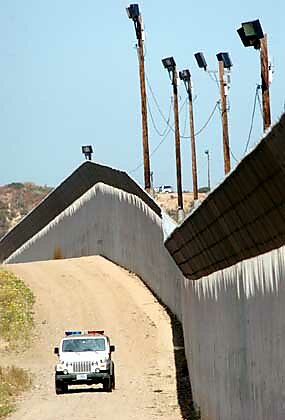The latest catch phrase in the immigration debate is that we must “get control of our borders” before we consider actually changing the current immigration law that has made enforcement so difficult in the first place.
In his Washington Post column yesterday, George Will wrote that “the government’s refusal to control [the U.S.-Mexican] border is why there are an estimated 460,000 illegal immigrants in Arizona and why the nation, sensibly insisting on first things first, resists ‘comprehensive’ immigration reform.”
On the other side of the political spectrum, Democrats in Congress this week unveiled the outlines of an immigration bill that would postpone any broader reforms, such as a new worker visa program or legalization of workers already here, until a series of border security “benchmarks” have been met.
Requiring successful enforcement of the current immigration laws before they can be changed is a non sequitur. It’s like saying, in 1932, that we can’t repeal the nationwide prohibition on alcohol consumption until we’ve drastically reduced the number of moonshine stills and bootleggers. But Prohibition itself created the conditions for the rise of those underground enterprises, and the repeal of Prohibition was necessary before the government could “get control” of its unintended consequences.
Illegal immigration is the Prohibition debate of our day. By essentially barring the legal entry of low-skilled immigrant workers, our own government has created the conditions for an underground labor market, complete with smuggling and day-labor operations. As long as the government maintains this prohibition, illegal immigration will be widespread, and the cost of reducing it, in tax dollars and compromised civil liberties, will be enormous.
We know from experience that expanding opportunities for legal immigration can dramatically reduce incentives for illegal immigration. In the 1950s, the federal government faced widespread illegal immigration across the Mexican border. In response, the government simultaneously beefed up enforcement while greatly expanding the number of workers allowed in the country through the Bracero guest-worker program. The result: Apprehensions at the border dropped by 95 percent. (For documentation, see this excellent 2003 paper by Stuart Anderson, a Cato adjunct scholar and executive director of the National Foundation for American Policy.)
If we want to “get control” of our border with Mexico, the smartest thing we could do would be to allow more workers to enter the United States legally under the umbrella of comprehensive immigration reform. Then we could focus our enforcement resources on a much smaller number of people who for whatever reason are still operating outside the law.

